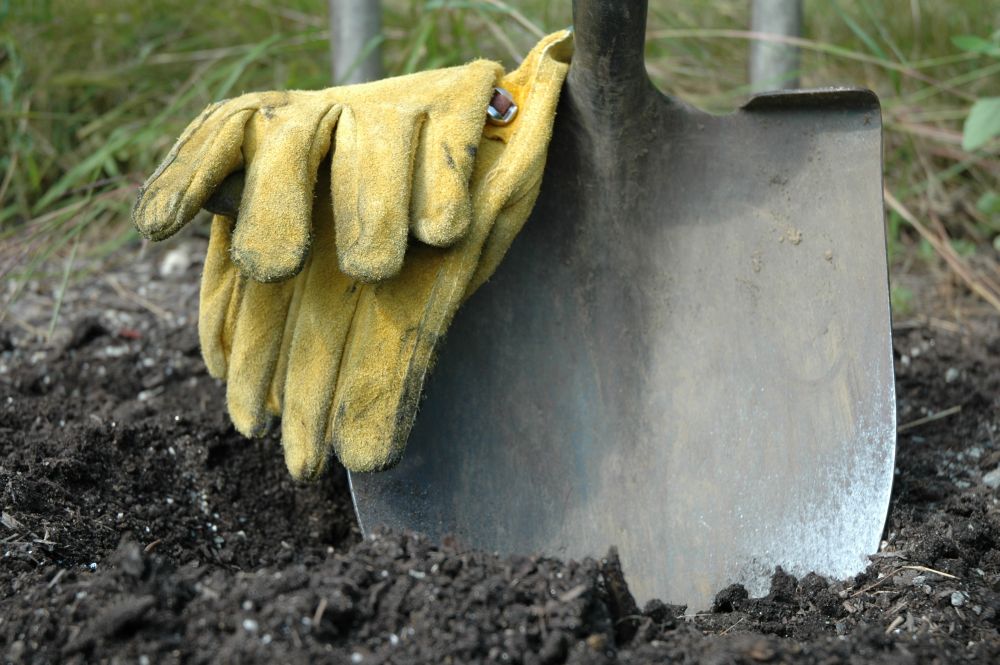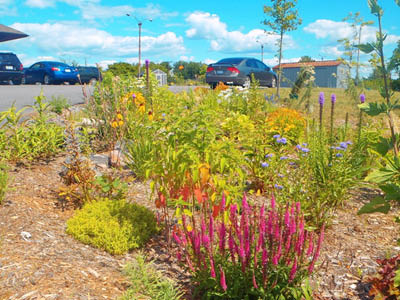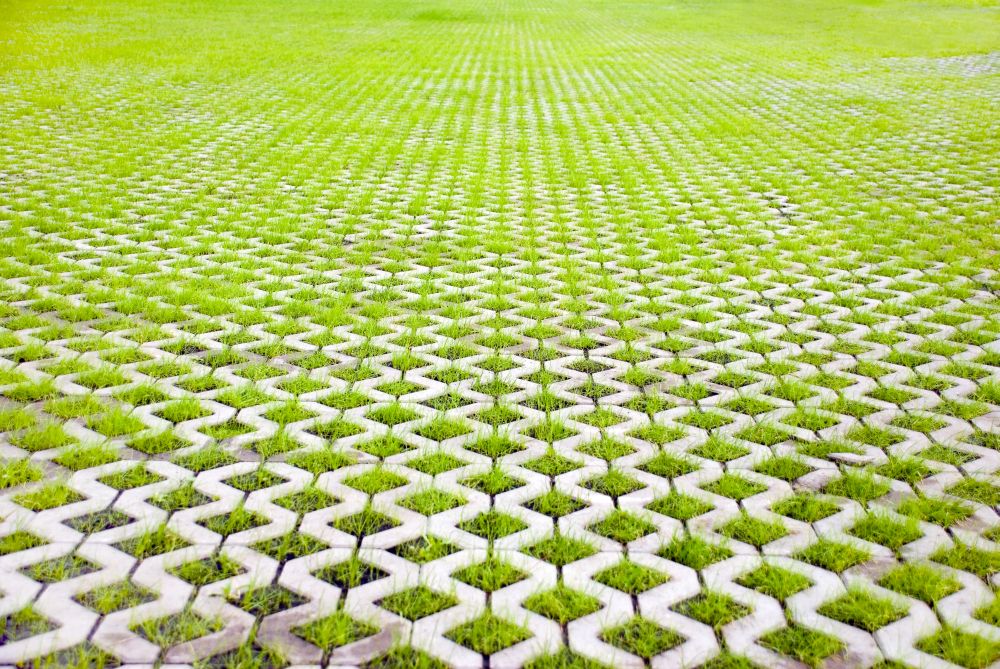Soak It Up!
Soil and vegetation can be used to absorb rainwater, reducing volumes while filtering pollutants.

Build a rain garden
Rain gardens, bioswales and dry ponds are depressed areas, planted with special plant species that have long root systems. Once established these root channels allow rain to percolate up to 12’ underground, even in tight clay soils. Visit Rain Garden Tour for instructions and examples of established rain gardens. A bioswale is similar except that it is linear – essentially a ditch designed to slow flow and maximize infiltration as water is being carried away from the site.

Plant native trees and plants
Native trees and plants intercept stormwater, absorb water through their roots, and are adapted to excessive moisture and drought. Toronto-based LEAF has a comprehensive list of native trees and shrubs. Evergreen also has a Canada-wide database of native plants.

Reduce paved areas
Pavement prevents water from soaking into the ground. Depave any unnecessarily paved areas. If you have a larger paved area on a public site, consider partnering with others in your community to stage a Depave Paradise event.
Consider permeable pavement
Permeable paving provides a stable surface while allowing rain to percolate down through gaps and gravel into the ground, recharging the aquifer. Some pavers are also designed to allow grass or other low growing species to thrive in the spaces between the drivable surfaces. Learn more about permeable pavement.
Install an infiltration gallery or soakaway pit
Infiltration galleries and soakaway pits are basically a hole in the ground filled with some type of permeable medium (plastic crate, gravel) that allows water to enter and percolate through into the soil. Watch the accompanying video to learn how to build a soakaway pit on your property. Check out how this school fixed up their sports field using one.
